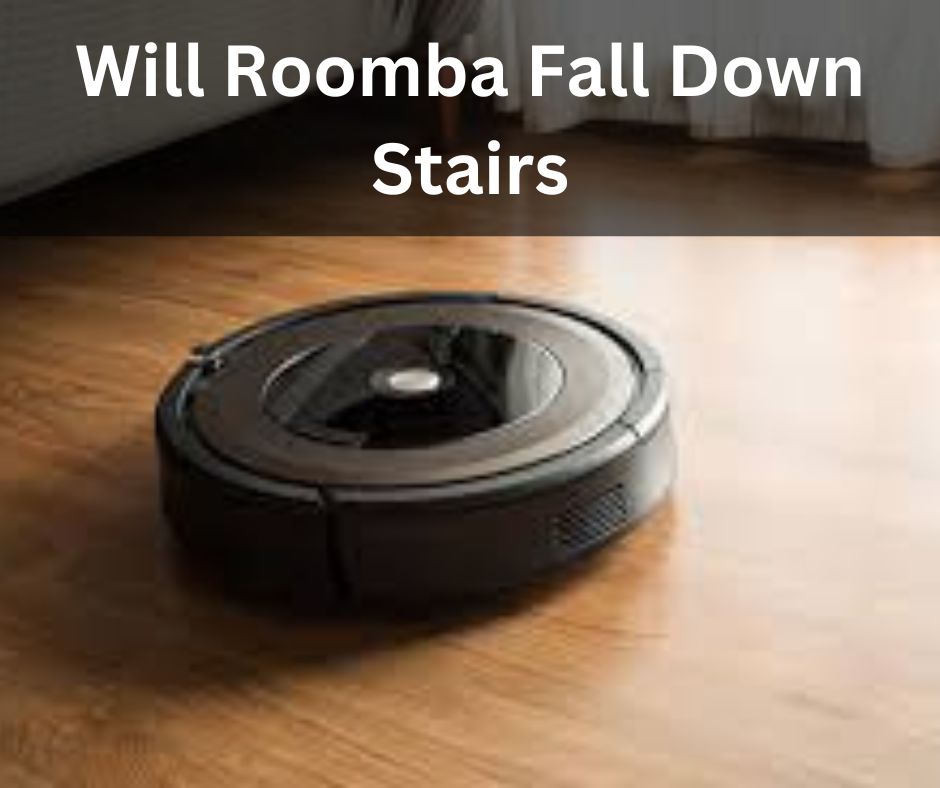One of the most popular questions about having a Roomba vacuum cleaner is whether it can navigate stairs. In this blog article, we will look into this matter further and see if Roomba vacuums can navigate stairs without falling. We will also go through any potential safety precautions or procedures that may be performed to avoid mishaps. Whether you already own a Roomba or are thinking about getting one, this information will help you make an informed choice.
Will Roomba Fall Down Stairs

Roomba vacuums are outfitted with a variety of technology that assists them in navigating stairs and avoiding falls. Infrared sensors, cliff detection sensors, and mapping technologies are examples of these. The Roomba’s infrared sensors and cliff detection sensors work together to identify the edge of the steps and save it from falling. The mapping technology enables the Roomba to map the place it is the cleaning and safely navigate it. These technologies work together to keep the Roomba from falling down the steps. It is important to remember, however, that Roomba, like any autonomous equipment, may be unable to prevent falling in certain conditions, such as if the device is blocked or broken.
How Do You Keep a Roomba From Falling Down Stairs?
- Clean the cliff sensors on your Roomba: The cliff sensors on your Roomba are placed at the bottom of the device and are used to detect the edge of stairs and other drops. These sensors can become clogged over time, impairing their capacity to detect dips. Cleaning the cliff sensors with a dry towel on a regular basis might assist guarantee that they are working correctly.
- Use iRobot Virtual Walls and keep-out zones: The Roomba software lets you create virtual limits or “keep-out zones” in your house. These zones may be used to keep the Roomba out of specific sections of your home, such as the staircase. iRobot Virtual Walls are physical objects that generate an infrared beam that the Roomba detects and avoids.
- Stop placing dark carpets near your stairs since Roomba’s cliff sensors detect drops using infrared technology. Dark rugs or carpets can absorb infrared light, making it harder for the Roomba to identify the stairwell’s edge. Avoiding the use of dark rugs or carpets near your stairs will assist the Roomba’s cliff sensors in recognizing the edge of the steps accurately.
- Replace faulty sensors as soon as possible: Roomba may be unable to detect drops if any of its sensors are damaged or destroyed. If your Roomba is having difficulty traversing stairs or other drops, inspect the sensors and replace any that are broken.
In summary, frequent maintenance of Roomba’s cliff sensors, the establishment of virtual and real borders, the avoidance of dark carpets near steps, and the immediate replacement of any damaged sensor will assist to protect Roomba from tumbling down stairs.
What to do if Roomba falls downstairs?
If your Roomba falls downstairs, there are a few steps you should take to address the situation:
- Turn off the Roomba: The first step is to turn off the Roomba to avoid additional harm or injury.
- Examine for damage: Examine the Roomba carefully for any apparent damage, such as fractures or broken pieces. If the damage is severe, it is preferable to contact the manufacturer for repair or replacement.
- Examine for obstructions: Check the brushes and wheels of the Roomba to ensure they are not clogged with debris or hair. Remove any impediments you encounter.
- Examine the sensors: Check that all of Roomba’s sensors are operational. This step is especially critical if the Roomba fell downstairs due to a sensor problem.
- Make certain that it is clean: Clean the Roomba using a dry cloth or a brush to remove any debris.
- Restart the Roomba: Once you’ve done these procedures, you may restart the Roomba to test its functionality. If it is, you can use it normally again.
Will A Filthy Sensor Send My Roomba Down The Steps?
A dirty sensor can impair the Roomba’s ability to recognize the edge of stairwells and other drops, perhaps causing the Roomba to tumble down the stairs. It is critical to maintaining the sensors clean in order for them to operate correctly and to avoid mishaps.
Is it safe to leave Roomba running when you’re not at home?
Allowing Roomba to run while you are not at home is typically safe, as long as you have taken the required steps to avoid mishaps, such as putting up virtual boundaries, keeping the sensors clean, and checking that it is operating correctly. If you have dogs or small children at home, however, it may be safer to watch the Roomba’s operation or arrange the cleaning period when you are there to avoid any mishaps.
Is Roomba capable of cleaning the stairs?
If Roomba is equipped with stair-climbing technology and the stair is not too steep, it can clean the stairs; otherwise, it can only clean flat surfaces and cannot climb stairs. Before attempting to clean stairs, check the specs of your Roomba model to determine if it is capable of doing so.
Will Roomba run into walls and furniture?
Roomba has sensors that let it travel around walls and furniture, although it may run into them on occasion, especially in compact places or when the sensors are filthy. It is usual for Roomba to bump into walls and furniture when cleaning, but this should not cause serious harm.
Conclusion
Roomba is an effective and convenient tool for keeping your house clean. However, it’s critical to understand its limitations and take the appropriate measures to avoid mishaps like falling downward. Keeping the sensors clean, utilizing virtual borders, avoiding dark carpets near stairs, replacing any damaged sensors as soon as possible, and arranging cleaning times while you are at home are all strategies to guarantee Roomba’s safe functioning. Additionally, before attempting to clean stairs, verify the specs of your Roomba model to determine if it is capable of doing so. Roomba may occasionally collide with walls and furniture, but this should not result in major damage.



